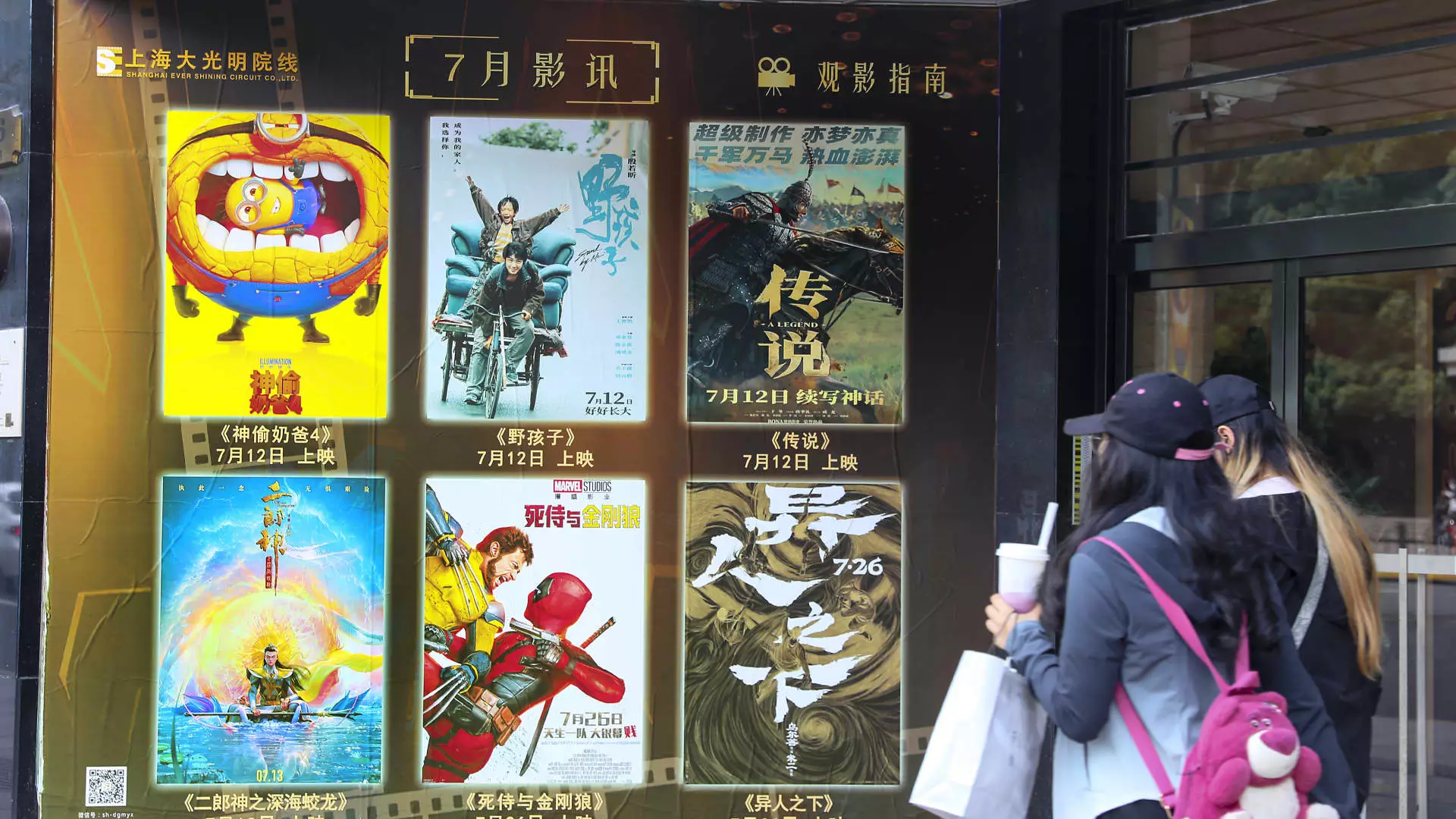As the world grapples with shifting geopolitical dynamics, President Donald Trump’s trade war has cast a long shadow over Hollywood, the land of dreams. With escalating tariffs on Chinese imports, an industry that once basked in the glow of a burgeoning box office in China now faces stark realities. The retaliatory measures by the Chinese government, particularly regarding the limitation on Hollywood films in local theaters, signify a troubling turn of events. Major players like Disney and Warner Bros. Discovery have watched their stocks stumble, underscoring the precarious balance the entertainment sector now navigates amidst rising tensions.
The allure of the Chinese market for American films has dimmed significantly. Once seen as a golden goose, the Chinese box office has gradually turned hostile, exacerbated by local productions flourishing in both quality and quantity. Audiences have shifted their preferences, further isolating Hollywood in a market they once dominated. Ann Sarnoff, ex-CEO of Warner Bros., aptly noted that rental rates, previously generous, now pose enormous challenges for U.S. studios. The fight isn’t merely against tariffs; it’s against an evolving cultural landscape where domestic fare is taking center stage, leaving Hollywood in the dust.
The Economic Fallout for American Studios
Much has been said about the financial implications of reduced box office returns from China. Sarnoff’s comments weigh heavily on the industry’s current economists, as projections for American films shift tragically southward. Previously, studios would bank on the Chinese audience to cushion blows from insufficient domestic ticket sales, but that safety net has been shredded. Film projections are increasingly reflecting a grim reality—some U.S. studios are now discounting the Chinese market altogether when estimating profitability. What was once a dependable income stream is now an uncertain gamble, forcing Hollywood to reevaluate its strategies.
In 2017, with the expiration of the U.S.-China Film Agreement, the path only became murkier. It ensured a consistent release of U.S. films in China, a deal that was crucial for many productions. According to Aynne Kokas, a professor at the University of Virginia, it was in this tumultuous trade climate that China’s box office began to bloom. U.S. studios have been sidelined, and while they have often neglected to prioritize their creative offerings to fit this new paradigm, the results are now evident: Hollywood’s dominance is waning in a market that has rapidly matured.
The Rise of Domestic Chinese Cinemas
China’s historic film “Ne Zha 2” crossing the $1 billion mark domestically is more than just a statistic; it’s a wake-up call. This signifies not just a triumph for local cinema but a stark reminder of Hollywood’s declining influence. Despite a handful of American films breaking previous records in the Chinese market, the trend is unmistakable: the tides have turned. Apart from the cultural implications, there’s also an economic factor to consider, as Yang Kokas emphasizes the sophisticated technology now employed in Chinese filmmaking, allowing for visual spectacles that compete head-on with Hollywood extravaganzas.
This growth during an era marked by Hollywood’s retreat raises critical questions. Does America’s film-producing machine risk becoming obsolete in its most lucrative foreign market? As studios are forced to rethink script narratives and production methods to suit international audiences, the broader implications might dictate a transformation in storytelling itself. The loss isn’t merely financial; it’s a crisis of identity for an industry that has always celebrated diversity in storytelling yet has now found itself cornered by a powerful competitor it can no longer overlook.
Currency Challenges: The Unseen Battlefront
Amidst the headlines of box office revenues and trade policies, lies an intricate undercurrent—the impact of currency fluctuations on the economic foundation of the film industry. As currency values shift, studios find themselves navigating a landscape where the cost of doing business is unpredictable. International returns rise spectacularly when the dollar weakens, yet the consequences weigh heavily on operational costs. What may seem like mere numbers on a report are emotional battlegrounds for an industry teetering at the edge of profitability.
Adding to the complexity is the volatility of the stock market, where shifts in tariffs translate into immediate consequences for Hollywood. The uncertainty leaves executives grappling with the influence of fluctuating geopolitical climates, making it nearly impossible to forecast the future. This environment of unpredictability fosters a heightened anxiety that can stifle creativity and innovation—two traits that have long defined Hollywood’s identity.
In this entrenched battle over trade, Hollywood must confront an uncomfortable truth: it’s no longer the uncontested titan of global cinema. It faces formidable home-grown competition, a challenging financial landscape, and a geopolitical landscape that changes as swiftly as box office numbers can fluctuate.

